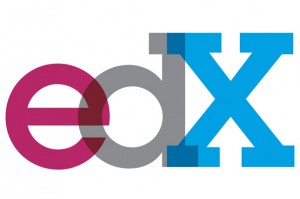Australia is set to embark upon its most ambitious, complex, and expensive defense project in history – the design and construction of its first indigenous submarine. Understanding why Australia has decided to commit to such a project requires both knowledge of Australia’s unique geographical environment and regional strategic realities.
Dubbed the Future Submarine Project, this ambitious scheme hopes to develop the ability to design, test, and construct an Australian submarine perfectly suited for the unique conditions in which it would be required to operate. The project is estimated to cost anywhere between 16 to 36 billion Australian dollars (the final price remains a point of contention) and aims to construct the largest diesel attack submarines in the world, surpassing even the mighty U.S. Virginia-class. The 2013 Defense White Paper unequivocally stated the nation’s intent, removing all other options from the table. There remains, however, a rather heated debate within Australia as to the risks versus possible reward of the Future Submarine Project. Australia has never before attempted something of this magnitude; normally preferring to purchase advanced pieces of military hardware from those who have spent decades perfecting the trade. Such crucial facts and some strategic foresight explain this ambitious move.
Firstly, unique geography plays an enormous role in Australia’s decision making. With one of the largest maritime domains in the world, a massive 8,148,250 square kilometers, Australia’s claims stretch from the freezing waters of Antarctica through to the far warmer waters in the North, near the equator. The sheer size of the zone raises a difficult question for the nation, which while large in geographic size, is relatively small in population, with roughly only 23 million people for a nation the size of the United States.
It remains rather difficult if not impossible, to patrol and monitor the vast majority of Australian waters. Subsequently areas of importance must be selected. Furthermore military platforms are required to spend long periods of time on station patrolling this zone and covering far larger swaths of sea with limited resources. Australia requires craft that are durable, versatile, and capable of long-term deployments.
The size of the continent creates another difficult situation for any navy but especially a submarine force. Multiple sea conditions surround the Australian coastline, with the warmer Pacific Ocean in the north and the much cooler Indian Ocean in the south, far rougher conditions occur in the Indian Ocean than in the milder Pacific Ocean. These climatic changes of temperature alter the salinity of the water, (thereby affecting buoyancy), creating a strong demand for durable and versatile craft.
Now, one may ask why the significantly more demanding polar South of the nation requires such serious attention. Despite being a zone of little activity, compared to the busy Northern trade routes, Australia places high strategic importance upon patrolling the Southern route, or so-called “Australian backyard”. Australia claims up to 40% of Antarctica (despite being ignored by most of the world’s powers, including the United States). Australia does however take this entitlement quite seriously and consequently, the southern region is patrolled and monitored. Anyone who doubts Australia’s intention to protect and guard its southern approach, need only look at a map of claimed Australian maritime borders, and note the strategically placed Macquarie and Heard Islands. These seemingly insignificant parcels of land allow for the creation of effective choke points to any approach of Australia’s claimed Antarctic region and southern trade routes. Should circumstances arise where northern trade routes become unsafe, or worse still blocked perhaps through conflict, the longer and inhospitable south would remain of vital importance. Australia relies on seaborne trade for survival, and if the above mentioned eventuality were ever to arise, the ability to place quiet attack submarines in the newly vital southern trade routes to protect shipping and monitor activity, becomes of unquestionable importance. Combined with Australian Antarctic sovereignty claims, the enforcement of the entire region becomes clearer to understand, despite the highly unpleasant arctic conditions.
Secondly, growing military capabilities within Southeast and Northern Asia place a further emphasis on the need for a highly survivable and capable submarine fleet. Australia looks beyond 2025 when questioning future military capabilities in Asia, this points to a period where many neighboring nations will have acquired formidable submarine platforms and anti-shipping capabilities. For example Indonesia is seeking to expand its small fleet of two submarines toward a more powerful twelve with the recent purchase of Russia’s quiet running Kilo-class diesel submarine. Vietnam will take possession of its first submarine fleet by the end of 2016. This is not to forget the expansive growth of Chinese A2/AD, or area denial abilities, primarily the growth of anti-shipping weaponry from the emerging power. Lastly, this also heralds the end of the aging Collins-class diesel attack submarine Australia currently employs.
While not necessarily constituting an arms race, the growth of submarine capabilities throughout Southeast Asian nations demonstrates the development of these nations as maritime powers who are self-conscious of their perceived lack of maritime defense ability. The growth of ballistic anti-ship missile technology helps to explain the sudden popularity of submarine fleets, as surface vessels lose their survivability in conflict. For smaller nations, these vessels work to create an important deterrent and if need be, the capability to wage effective warfare against a more powerful enemy.
As for Australia, while it certainly doesn’t consider the growth of neighboring military capabilities a risk to its survival, it understands how maritime abilities developed by its neighbors can help secure Southeast Asia and those ever important trade routes. However, it also realizes that the growth of military capabilities erodes Australia’s traditional military edge over its immediate possible rivals. Seemingly then, the desire to have one of the most capable and deadly submarine fleets in the region remains critically important to Australia, which considers much of Southeast Asia of vital strategic importance. Any Asian history buffs should look to the 1951 Radford Collins agreement to get a sense of the zone (large portions of the Indian and Pacific Oceans) Australia has considered under its immediate strategic concern, and perhaps what it still does.
Thirdly we come to the varied options Australia has to replace the aging Collins-class. Taking into consideration the above requirements for the future submarine, the list of possible options for replacing the Collins-class is seemingly on the short side. The SEA 1000 project was the study committed in order to ascertain Australia’s requirements for a future submarine. Three basic options were put forward: to buy a MOTS (model off-the-shelf) design and modify it for Australian conditions, evolve the current Collins-class submarine for future use, or lastly create a brand new indigenous submarine designed for Australian requirements.
The first option of buying MOTS craft, while certainly more cost effective and of lower risk than the other two options, would struggle to fulfill Australian demands, despite major and costly modifications. While most capable submarines are more than suitable for many other Southeast Asian nations, the vast majority of MOTS-designed craft would not be suited for the expansive Australian maritime border. Most MOTS craft are relatively small, with an average crew of around 30-to-50 men, resulting in less time deployed and limited range due to lack of fuel and food supply.
The Collins-class by comparison holds upward of 80 men with far larger compliments of fuel and food, allowing for greater deployment time, upward of three months. The new Future Submarine is planned to be even larger. The increased size also allows for greater armament of torpedoes and guided missiles. The Virginia-class nuclear attack submarine has often been touted as a possible alternative to an Australia design, and while there have been indications that the U.S. might be willing to sell them, the nuclear element of the craft was rejected by the Australian government. While this has been blamed on a lack of nuclear infrastructure in order to effectively manage a nuclear propelled craft, it is more likely the government remains unwilling to attempt a difficult sell of nuclear technology to a voting public distrustful of nuclear energy, and as a major signatory of the NPT (non-proliferation treaty) it would be trekking into unknown legal waters by attaining nuclear powered craft. Ultimately then, a purchase of MOTS submarines would poorly fit Australia’s needs, and would more than likely result in far greater cost in order to get them to an acceptable level, and without nuclear power, any real contender craft are removed.
The option of evolving the current Collins-class is also touted as a more cost-effective alternative to producing a brand new submarine. However the historical failings of its original design have left an unpleasant memory within the Defence Force and government, who now strive to avoid the same mistake. The Collins-class was put to tender from seven of the world’s nine diesel shipbuilding companies. Eventually the Swedish company, Kockums, put forward the Type 471 submarine, fitted with systems from an American company, Rockwell. From the onset major issues arose with the submarine build, resulting in numerous mechanical failures and setbacks. This meant cost spiraled greatly, and a following disagreement between Rockwell, Kockums, RAN, and the Australian government meant the vessels were delayed in their construction.
A lesson learned after costly upgrade programs were enacted was that too much diversification on one project could result in communication breakdowns, and the incompatible mating of components made from different suppliers resulted in unforeseen issues, especially when attempting to implant American combat systems into MOTS submarines. This helps to explain the current decision to commit to the largest and most complex defence project in Australia’s history. Again, however, there is great depth into understanding the current decision, the emergence of a nation set on expanding its abilities and standing in the world.
The RAND Corporation was hired by the Australian government to conduct a study into Australia’s submarine building and design capacity. It subsequently found that while the infrastructure was only slightly lacking, and the software capability was acceptable, a skills shortage proved to be the greatest problem, especially in regards to undersea propulsion. At no stage was the possibility of an indigenous submarine design and construct ever deemed impossible, rather, it conveyed a real sense of the possibility of Australia enhancing its ability to produce complex and highly advanced defence platforms. Plans to amend shortages were subsequently created.
The Future Submarine Project is already well underway, with the Future Submarine Project Office established in Adelaide. Tenders must be sent out for the design and development for the hull, systems and various components, and the ASC (Australian Submarine Company) is to begin construction sometime within the new few years through 2030. The ASC is well placed to fulfill the construction of the Future Submarine, with decades of work on the Collins under its belt, from construction work to maintenance of the Collins and finally to upgrading the troublesome boats.
As for a nuclear option, it remains unlikely. While nuclear powered submarines would be the best possible option for Australia, as argued here, a lack of political will is likely to hamstring any attempts. The current conservative government however, is perhaps more pragmatic and positive towards the possibility and with a new Defence White Paper due the end of 2014, there remains hope. Australia is keenly self-aware of its unique strategic position in the world, and has striven since World War II to develop capabilities that allow for a self-reliant defence ability of the massive island nation. Despite a riskier option, the rewards offers far greater justifiable benefits in development of an indigenous Australian submarine, allowing the country to reach a new level of self-reliance and confidence, and take a strategic leap forward in the world in an uncertain and ever-changing world.
Ben Collopy is a honors study at the University of Newcastle Australia. He is undertaking an in-depth look at the future of the ANZUS alliance with Australia.







